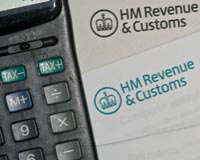The April 2017 business rates revaluation will mean double- and triple-digit increases in rateable values in some London hotspots. EG asks the experts if a business rates Armageddon is really just 12 months away.
Developers Dream or nightmare?
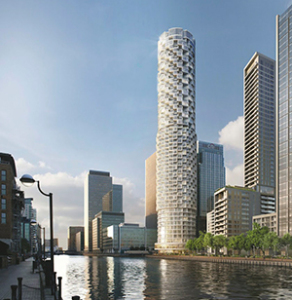 Revaluation is a gift to developers with projects in lower-rated but well-connected locations, and Chris Hiatt, director at Landid, isn’t afraid to say so. “We see ourselves as the beneficiary of rates revaluation. Including rates and rent, our total occupational costs in places like Uxbridge will be £50 per sq ft, which is about the size of the rates bill alone in some central London locations. So we expect more occupiers to look at us – and we hope we will benefit.”
Revaluation is a gift to developers with projects in lower-rated but well-connected locations, and Chris Hiatt, director at Landid, isn’t afraid to say so. “We see ourselves as the beneficiary of rates revaluation. Including rates and rent, our total occupational costs in places like Uxbridge will be £50 per sq ft, which is about the size of the rates bill alone in some central London locations. So we expect more occupiers to look at us – and we hope we will benefit.”
Landid, with Brockton, are hoping the rate revaluation will help their two western corridor schemes in Hammersmith (One Queen Caroline Street, W6) and Uxbridge (The Charter Building).
Alas, it is unlikely that occupiers in buildings completed in 2018-19 will qualify for transitional rate relief. This means tenants fleeing rising occupational costs by heading east to new developments like Wood Wharf, E14, are likely to face the full force of the rising rates liability. “Developers will want things finished before 1 April 2017,” says Paul Nash, Lambert Smith Hampton head of rating in the south.
So should developers worry? “We don’t yet know the shape of the transitional relief scheme – if there is one,” says Michael Pain, partner at Carter Jonas, “but if we look back to the 2010 revaluation, new buildings that did not qualify for transitional relief suffered zero effect,” he says.
Pain points to Hines’ experience at 1 Grafton Street, W1, where the rates bill rocketed from £22 per sq ft to £48. Even so, Hines scored a record rent of £97.50 per sq ft at the 35,000 sq ft block. “Maybe Mayfair is not a good guide to the rest of the London market, but we all thought tenants would look at the new high rents and demand a discount, but not a bit of it,” says Pain.

Tech sector Meltdown to minor glitch?
 “The tech market will be one that suffers more than most sectors, because of the phenomenal rental growth in EC1, Aldgate and Silicon Roundabout,” says David Earle, head of central London office agency at Lambert Smith Hampton. “Some young tech businesses have a lot of capital, but it will have an effect on their occupational costs and, in turn, on their choice of locations,”
“The tech market will be one that suffers more than most sectors, because of the phenomenal rental growth in EC1, Aldgate and Silicon Roundabout,” says David Earle, head of central London office agency at Lambert Smith Hampton. “Some young tech businesses have a lot of capital, but it will have an effect on their occupational costs and, in turn, on their choice of locations,”
“We are already seeing tech occupiers thinking less about postcodes and more about costs.
They might start to look further east.”
According to JLL projections, Shoreditch is certainly due a substantial increase in rates bills. If you were paying £12 per sq ft on grade-A offices in 2016/17, it will rise to £28.77 in 2017/18 (pending transitional relief).
Clerkenwell will rise even more sharply (£14.40 to £30.31).
Gerald Eve is predicting up to an 87% rise in rateable values in Stratford, and 40% or more in Shoreditch.
Tim Attridge, senior director at CBRE, says: “Shoreditch is set to see prime rates payable more than double. The government is likely to introduce
a transitional relief scheme phasing increases for businesses already in situ, as such their rates payable will only tick up to £16-£17, highly competitive compared to many surrounding areas, so unlikely to be the reason for much in the way of occupier migration.”
The techy districts may find their rates bills continue to grow after 2017 as the new Crossrail Elizabeth line pushes up popularity and hence rents.
Tim Beattie, lead director at JLL, says: “There might be an effect in the 2020 revaluation, or earlier, if the valuation office decides the new line amounts to a material change in circumstances. Although it did not do that when the new Jubilee line opened.”
High-end retail Card declined or ker-ching?
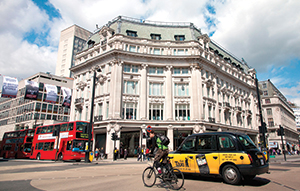 “I was talking to the finance director of a big retailer taking some Oxford Street premises. The old rates bill was £400,000 a year – but the rent in 2015 was more than £1m a year, and they just do not get the connection between the one and the other.
“I was talking to the finance director of a big retailer taking some Oxford Street premises. The old rates bill was £400,000 a year – but the rent in 2015 was more than £1m a year, and they just do not get the connection between the one and the other.
“People will get caught out. Rates revaluation will come as a shock.”
So says John Webber, head of rating at Colliers International, who warns rateable values in prime London retail locations could go up by a whopping 200-400%. “For some operators, occupational costs at that level won’t be viable – even for flagship stores. Nobody can sustain that,” he says.
Colliers calculates that Dover Street’s rateable values will soar by 415% – making Leicester Square’s 239% look modest by comparison. Jermyn Street will rise by 133%, they say, with Old Bond Street up by 169%, and South Molton Street up by 100%.
“Bond Street and Oxford Street could be absolutely hammered,” says David Jones, senior director at Bilfinger GVA. “And it will be a double whammy, because not only will rateable values rise but, to keep the rates tax take the same across the UK, the tax itself could rise to 53p in the pound. Occupiers will also have to cope with the Crossrail and small business supplements – about 5p in the pound.”
Not everyone agrees. “Talk of triple figure percent increases may be true in some cases, but they are extreme cases and I don’t suppose the valuation office will go to those extremes,” says Jerry Schurder, head of business rates at Gerald Eve. His firm predicts a 112% rise for Bond Street, 49% for Oxford Street and 43% for Regent Street.
David Ford, director at CVS, agrees. “Yes, there has been massive growth in prime retail rents, driven by the international brands, but at places like Bond Street, I think we are looking at closer to 80% increases in rateable values, not big three figure rises,” he says.

Risk to Investors Underwater or overstated?
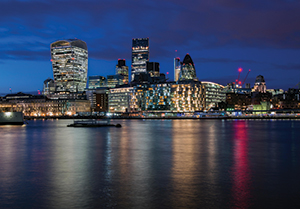 If rates go up, will rents come down as occupiers exert pressure to keep their occupational costs stable? And, if that happens, will investors find themselves sitting on over-valued assets?
If rates go up, will rents come down as occupiers exert pressure to keep their occupational costs stable? And, if that happens, will investors find themselves sitting on over-valued assets?
Some observers say there is a real risk. “We will see properties suddenly overvalued,” says John Webber at Colliers International. “Occupiers will realise their costs are unsustainable and new rents will be struck which, because leases are now shorter, will mean a quick rebasing of ERV.”
Jerry Schurder, head of business rates at Gerald Eve, disagrees:
“The risk of business rates revaluation is overstated – unless, of course, we have a recession simultaneously. We had that conjunction in 2010.”
“Sensible investors have already priced for rating revaluation,” says Mark Henderson, senior director at Cushman & Wakefield.
“Responsible purchasers will have done this before they bought. I have been consulted and in real detail on particular buildings and whether this tenant or that is likely to be affected. Although inevitably there will be some investors who are blind to the issues.”

Restaurants and leisure Cocktails or tea and biscuits?
 Trendy east London artisan coffee shops could be one of the big victims of the revaluation. No amount of frothy coffee can save them from a dangerous challenge to a low-margin business, says David Jones, senior director at Bilfinger GVA. “And, as they cope with rising rates, they will also have to cope with the new living wage and rules on pensions. It will be tough,” he says.
Trendy east London artisan coffee shops could be one of the big victims of the revaluation. No amount of frothy coffee can save them from a dangerous challenge to a low-margin business, says David Jones, senior director at Bilfinger GVA. “And, as they cope with rising rates, they will also have to cope with the new living wage and rules on pensions. It will be tough,” he says.
Colliers’ John Webber agrees. “Restaurants can’t push up prices by 30-40% when we have zero inflation and wage growth is low.”

The mayor takes charge of rates Expensive or irrelevant?
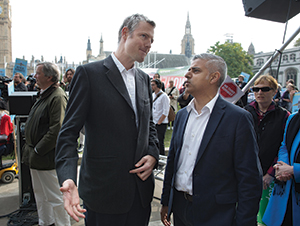 Thanks to last month’s Budget, the new mayor of London will take control of the business rating system in London in April 2017 – three years earlier than expected. This will give the mayor control over almost £1bn more of locally raised taxes.
Thanks to last month’s Budget, the new mayor of London will take control of the business rating system in London in April 2017 – three years earlier than expected. This will give the mayor control over almost £1bn more of locally raised taxes.
Alan Watson, head of rating at Rapleys, says: “Before centralisation of business rates in 1990, local councils used to send out inspectors to look for improvements in property value. We don’t yet know how the new system will work, but it is not a risk, it is a certainty, that the mayor will want to do this.
“Before 1990, big cities and London boroughs charged higher business rates. So there is clearly a political risk. And the mayor can already add up to 2p in the pound to business rates.”
Matthew Midwinter, partner at Sanderson Weatherall, says: “The danger here is that if many rateable values double in London after 2017, and the local authorities are encouraged by central government to retain all the business rates they collect, business rates payments in London could be far higher per sq m than other locations in UK or other major cities in the world.”








